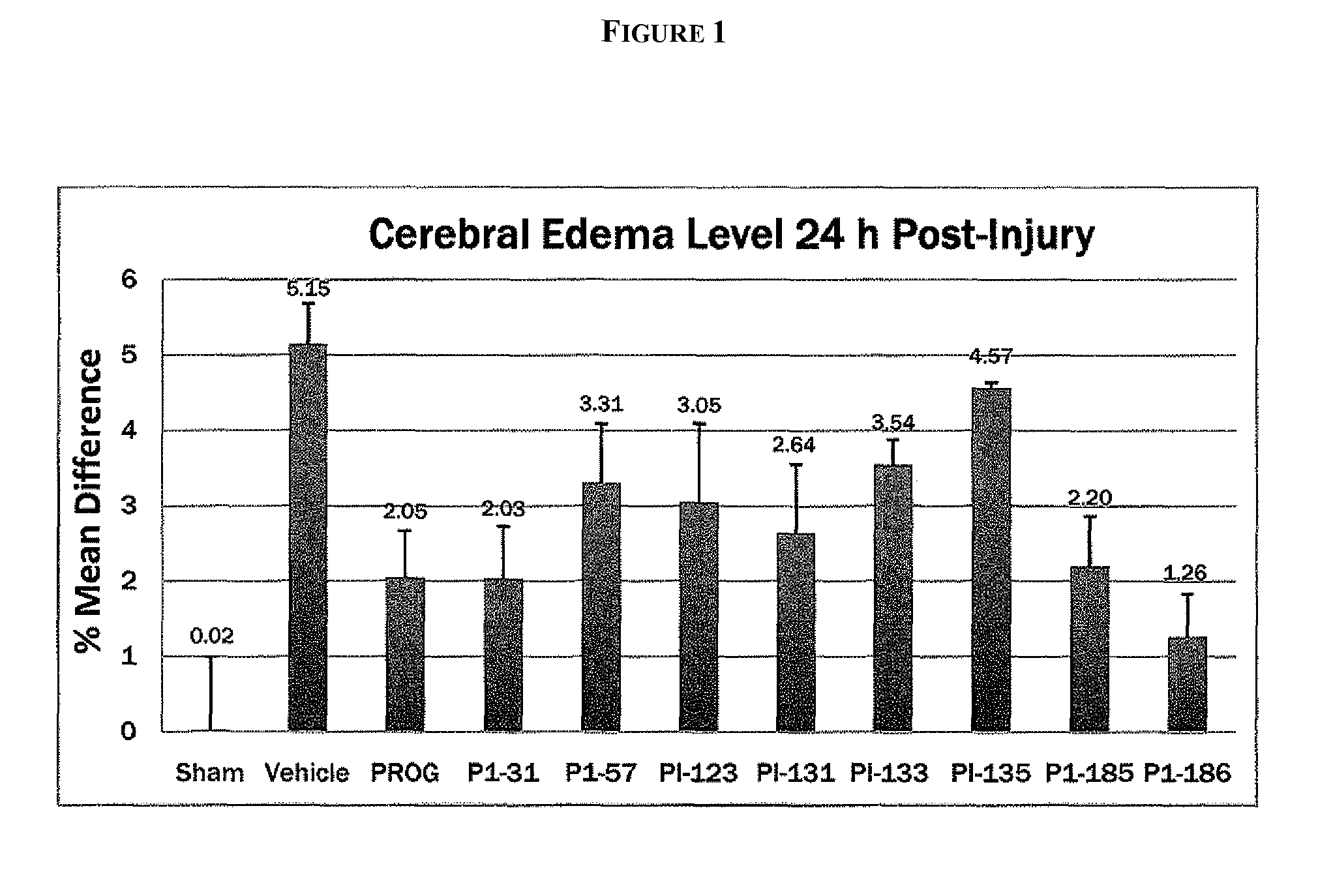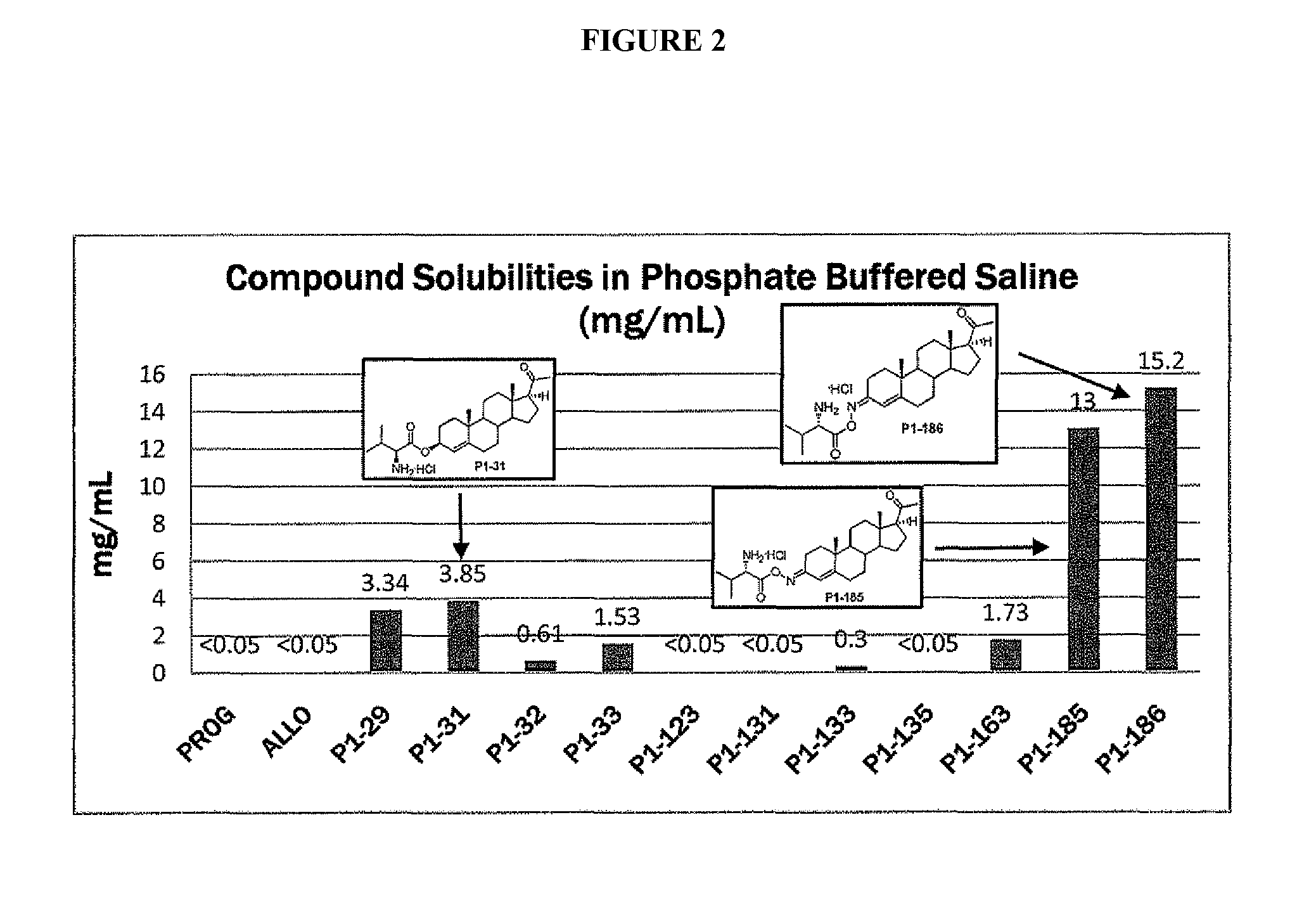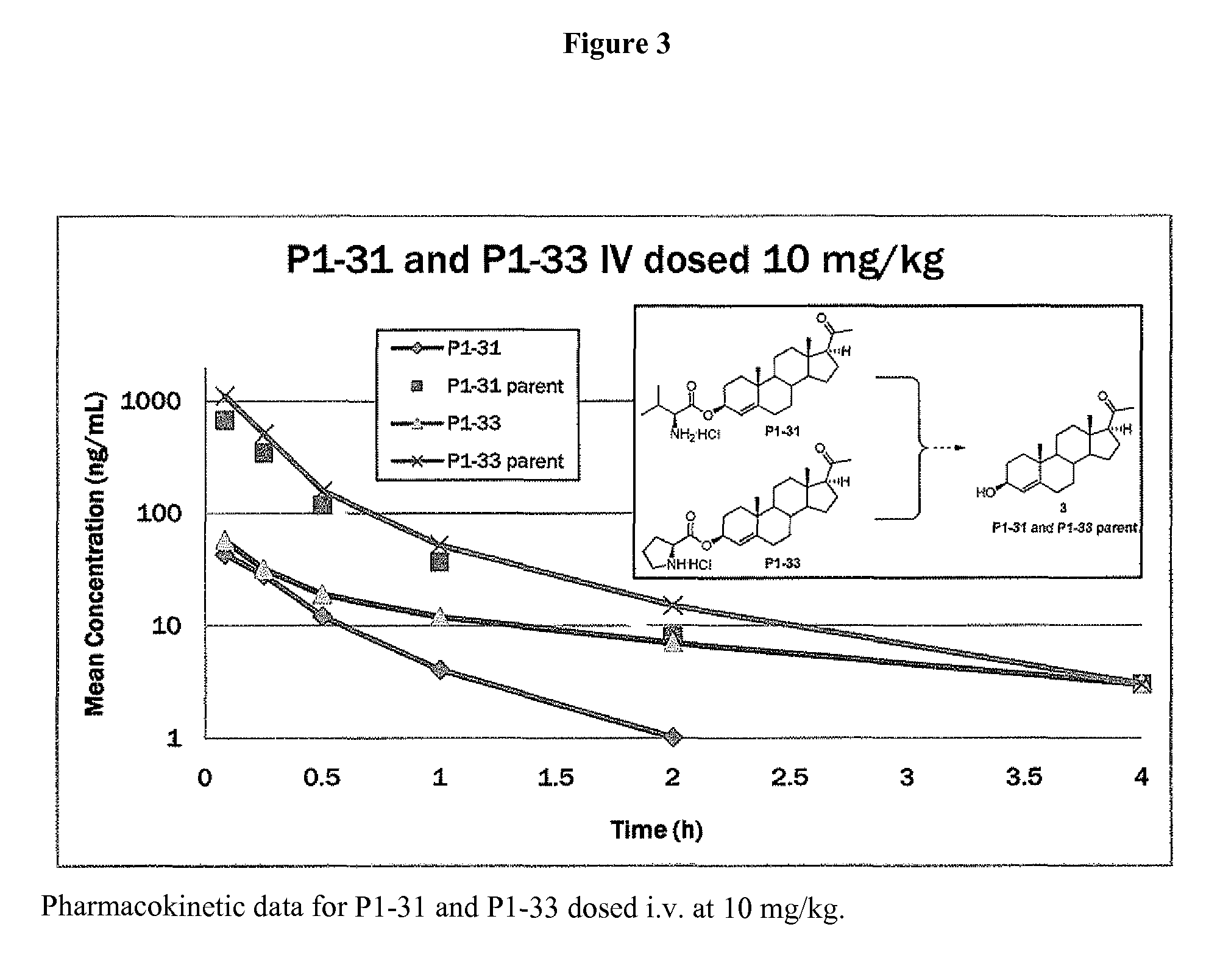Steroid analogues for neuroprotection
a technology of neuroprotection and steroids, applied in the field of pharmaceutical chemistry, can solve the problems of inability to consistently improve outcomes, inflammation is a principle cause of secondary damage, long-term damage, and more severe injuries, so as to prevent neurodegeneration, prevent neurodegeneration, and alleviate the initial damage to the cns
- Summary
- Abstract
- Description
- Claims
- Application Information
AI Technical Summary
Benefits of technology
Problems solved by technology
Method used
Image
Examples
example 1
Effectiveness of Progesterone Analogues in Reducing Post-Injury Edema
[0618]A well established whole animal model of TBI was employed in order to investigate the potential efficacy of the PROG analogue compounds relative to PROG in reducing cerebral edema following injury. Anesthetized male rats were first subjected to cortical contusion and were then given two 8 mg / kg doses of the test compound, the first at 1 h post-surgery and the second at 6 h. The animals were then sacrificed and tissue samples were taken from both injured and non-injured sections of the brain. Wet and dry weights were collected for each sample and cerebral edema (% water content) was determined as the difference in wet and dry weights divided by the wet weight. A “% mean difference” value could then be calculated based on the relative edema difference between injured and non-injured tissue samples for a given animal. The “sham” animals did not receive an injury but served as a control group for possible anesthe...
example 2
Preparation of Compounds General Experimental
[0620]All reagents were obtained from Aldrich. Reactions requiring anhydrous conditions were performed in oven-dried glassware under dry argon. All solvents used were anhydrous or kept dry over activated 4 Å molecular sieves. Convection was achieved by use of a magnetic stirring bar unless otherwise noted. The following abbreviations may be used: dichloromethane (DCM), diethyl ether (ether), water (DI), hexane (hex), ethyl acetate (ea), dimethylformamide (DMF), acetonitrile (ACN), tetrahydrofuran (THF), round bottomed flask (RBF), hours (h), minutes (min), millimole (mmol), equivalents (eq). Reaction progress was monitored via thin-layer chromatography (TLC) on pre-coated glass-backed plates (silica gel 60 Å F254, 0.25 mm thickness) purchased from EM Science. Flash chromatography was carried out with silica gel 60 Å (230-400 mesh) from Sorbent Technologies. Automated chromatography was performed on an Isco Combiflash Companion. Unless oth...
example 3
C-3 Progesterone Derivatives
[0623]
[0624]3-β-Hydroxy-progesterone (2). Progesterone (3.14 g, 10.0 mmol) was added with cerium chloride heptahydrate (3.73 g, 10.0 mmol, 1.00 eq) to an oven dried three necked 250 mL RBF with thermometer. Methanol (100 mL) was added under argon and the solution was chilled to −20° C. Sodium borohydride (0.189 g, 5.00 mmol, 0.500 eq) was then added in bulk. Solution temperature raised briefly up to −16° C. After 15 minutes, 37 mL acetone was added and the solution was warmed to ambient temperature. Water (25 mL) was added and the solvent volume was reduced by approximately 100 mL. Ether was added, along with more water, which caused the solution to become clear and colorless. The aqueous layer was extracted with ether. The organic layers were combined, washed with brine, dried, filtered, and concentrated to give 3.14 g white solid. The solid was prepared as a silica cake, loaded onto a 500 mL silica column, and eluted with 3 L 20% ethyl acetate in hexane...
PUM
| Property | Measurement | Unit |
|---|---|---|
| body weight | aaaaa | aaaaa |
| body weight | aaaaa | aaaaa |
| body weight | aaaaa | aaaaa |
Abstract
Description
Claims
Application Information
 Login to View More
Login to View More - R&D
- Intellectual Property
- Life Sciences
- Materials
- Tech Scout
- Unparalleled Data Quality
- Higher Quality Content
- 60% Fewer Hallucinations
Browse by: Latest US Patents, China's latest patents, Technical Efficacy Thesaurus, Application Domain, Technology Topic, Popular Technical Reports.
© 2025 PatSnap. All rights reserved.Legal|Privacy policy|Modern Slavery Act Transparency Statement|Sitemap|About US| Contact US: help@patsnap.com



